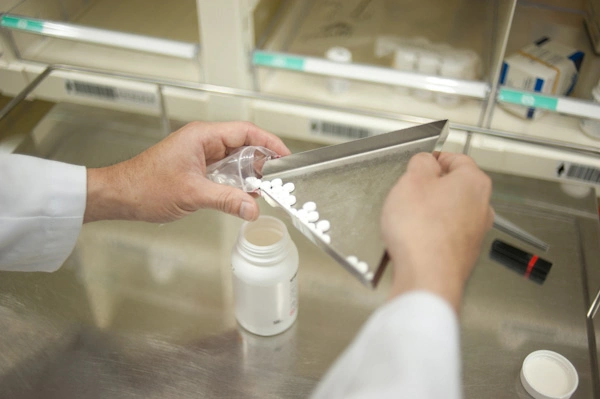by John Graham, Group CEO, Zuellig Pharma

Change is perennial in the healthcare industry. With evolving patient needs, emerging disease areas and new innovations driving this fast-moving landscape, we need to collectively prioritise access to healthcare, affordability and sustainability to benefit the health of communities across Asia.

This, alongside collaboration among key stakeholders, is key to ensuring continued access to healthcare across communities in Asia.
From the discovery of insulin and penicillin in the early 20th century, the pharmaceutical industry has come a long way in meeting the healthcare needs of the world’s populations. Rapid research and development of innovative drugs and therapies have countered the emergence of new diseases that threaten to have dire impacts on communities, especially those unequipped to address them.
However, with every new year that brings unprecedented opportunities for the industry, the landscape also grapples with the impact that external economic forces have on delivering healthcare. Inflationary pressures, rising costs and geopolitical headwinds have all had an impact on many industries, and the pharmaceutical sector is no different. There is a need for sustainable, innovative and efficient solutions across the healthcare value chain and it is critical that the industry stays focused on the end goal of providing greater access to high-quality healthcare for the people who need it most.
Complex challenges hindering access to healthcare in an evolving landscape
In a region as diverse as Asia, the challenges faced by each market in making healthcare affordable and accessible are as unique as the populations that live in them. With rising healthcare costs, changing regulatory and compliance standards and fragmented medical supply chains, ensuring that patients are able to access the medicines they need has been an uphill task for manufacturers, distributors, and healthcare professionals.
Affordability and inequitable distribution among developing and developed nations
Access to emerging innovations in the pharmaceutical space has been largely out of reach for developing nations, with reimbursement systems at varying levels of maturity in the region, placing greater burdens on the patient to pay out-of-pocket. With different levels of health financing from local governments as a result of a dependence on economic growth, the sustainability of widespread healthcare access can be challenging.
During the pandemic, many discussed the delay in access to vaccines for developing nations. Countries ranking lowest in GDP per capita were found to have waited the longest for COVID-19 vaccines as opposed to those with larger economies, despite the pandemic being indiscriminate in its toll on populations. Vaccine nationalism and a lack of universal healthcare have been two of the biggest reasons for why access across Asia Pacific was disparate, and three years on from the pandemic, access to the newest drugs and healthcare innovations paints a parallel picture.
Gaps in global healthcare supply chains
The last few years have revealed vulnerabilities in global medical supply chains, and several key challenges continue to make the delivery of healthcare less resilient to external shocks.
Supply networks have become more exposed to demand and supply fluctuations as a result of production concentration and a lack of diversification of supply sources. Extensive offshore sourcing of critical materials has also made supply chains more complex and fragmented, putting critical healthcare products at higher risk of production stoppages when faced with border closures.
Product availability is hindered when faced with no-fly zones during geopolitical turmoil, and natural disasters such as flash floods and earthquakes which can cause severe consequences for the ability to manufacture much needed healthcare supplies and products due to shortages in inputs. When coupled with protectionist measures and the imposition of movement limitations during exceptional circumstances, it is evident that the global medical supply chain is not prepared for long-term resilience.
In order to provide the high-quality care patients need, the intricate and complex web of suppliers, distributors, regulatory bodies and local healthcare providers need to ensure that they are properly resourced, and resistant to external shocks in the event of supply deficiencies or a spike in demand. Boosting supply reliability, operational efficiencies and ensuring that systems remain agile will be crucial.
Modern solutions for modern problems
From manufacturers and distributors, to healthcare providers, ensuring sustainable access to healthcare for patients requires a collective effort. It is critical that businesses in the industry work collaboratively towards a shared goal of strengthening health systems and healthcare delivery. Rome was not built in a day, and the same applies for solutions that are geared to solve complex, evolving challenges.

The importance of cross-sector collaboration and supply chain resilience
In order to ensure that healthcare access is equitable and affordable, organisations in both the private and public sector need to be proactive in cultivating the right relationships, driven by shared goals. From the research and development process to the launch of drugs in far reaching markets, industry players have a hand in ensuring that the patient remains at the centre of their purpose. At both ends of the drug life cycle, strong partnerships between manufacturers, regulatory bodies and governments can help to ensure that developing nations are not left behind.
For example, ensuring that the right logistics, infrastructure and processes are in place to support global clinical trials in underrepresented markets can play a critical role in ensuring diversity in the R&D process. However, with increasing complexity of supply chain management, and new emerging therapies that require specialised methods of handling, ensuring that clinical needs are compliant with both local and international regulations will involve experience, knowledge and partnership between multiple stakeholders.
On the other end of the spectrum of drug delivery, cross-sector collaboration can help to circumvent issues in access when trade grinds to a halt during border closures, or when supply chains are threatened due to geopolitical incidents. At the same time, it is important that supply chains are further strengthened with greater end-to-end visibility to adequately address risks and produce contingencies for potential shocks. Diversifying sourcing for important commodities required in production between offshore and domestic suppliers can also play a critical role in making supply chains more resilient especially during times of crisis.

Introducing innovative and efficient methods of delivery
As consumer behaviour evolves, this too, necessitates the need for newer methods of drug delivery. Digital solutions will support patient autonomy and the increased accessibility for personalised care, but changing regulatory landscapes will continue to shape the way businesses such as telehealth and e-pharmacies operate and grow. Governments and regulators need to work hand in hand with businesses to ensure that the potential of such solutions can be tapped for the betterment of patient access, while ensuring that they remain transparent and accountable to users and the environment they operate in.
Patent cliffs and emerging advanced therapies have also had an important influence on the portfolios of manufacturers, and while these challenges remain for the industry to reconcile, ensuring that the supply chain evolves to encompass such changes will also be critical. Utilising new-generation technologies that go beyond traditional cold chain capabilities, that can support and monitor variable temperatures and provide real-time insights at every step of the delivery journey will have a profound impact on the supply chain. Concurrently, equipping distributors with the right expertise to make the necessary infrastructure and process shifts to accommodate such changes will have a lasting impact on ensuring the integrity of medicines to even the most remote communities.
It is also critical to note that as the world evolves, climate change will continue to pose greater threats to population health. While some experts have predicted the emergence of more serious infectious diseases as a result of rising global temperatures, others have also highlighted that the growing intensity of climate-related disasters and hazards will erode supply chain resiliency, causing greater disruption in an already fragile environment. With this in mind, the industry should also increasingly prioritise the deployment of sustainable solutions, leveraging digital solutions and renewable energy sources to decarbonise supply chains and reduce their impact on our world.
Where the future lies for equitable access to healthcare
To ensure that high-quality healthcare continues to reach patients in both developed and developing nations, the pharmaceutical industry needs to continue to work towards holistic and comprehensive solutions that can address gaps in the ecosystem. With companies continuing to innovate for the improvement of healthcare, it is up to the collective effort of individual players, both private and public, to ensure that its benefits can be reaped by all.
References
1. Lim MY, Kamaruzaman HF, Wu O, Geue C. Health financing challenges in Southeast Asian countries for universal health coverage: a systematic review. Archives of Public Health. 2023 Aug 17;81(1):148.
2. Duroseau B, Kipshidze N, Limaye RJ. The impact of delayed access to COVID-19 vaccines in low-and lower-middle-income countries. Frontiers in public health. 2023 Jan 12;10:1087138.
3. Ulep VG. Strengthening health systems to address inequities in COVID-19 vaccine access in the Asia-Pacific region: special series on trade and health.
4. Upton J. The impact of war on drug supply chain. MJH Life Sciences; Available from: https://www.pharmaceuticalcommerce.com/view/the-impact-of-war-on-drug-supply-chain
5. Miller FA, Young SB, Dobrow M, et al. Vulnerability of the medical product supply chain: the wake-up call of COVID-19BMJ Quality & Safety 2021;30:331-335.
6. Patz JA, Epstein PR, Burke TA, Balbus JM. Global climate change and emerging infectious diseases. Jama. 1996 Jan 17;275(3):217-23.
This article was published in Asian Hospital & Healthcare Management.
